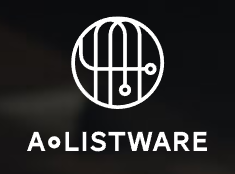Building a mobile app in the Philippines has become a cost-effective option for startups and enterprises alike. Whether you’re planning a simple tool or a complex platform, it’s important to understand how much you might spend. This guide outlines average development costs, the main factors that influence pricing, and what to consider when budgeting for your project.
Average App Development Costs in the Philippines
Mobile app development costs in the Philippines vary based on complexity, platform, design, and the team involved. Based on market research and published estimates, here is a general overview of what businesses can expect:
- Basic apps: ₱150,000 to ₱400,000
- Moderately complex apps: ₱400,000 to ₱1,200,000
- Complex apps with advanced features: ₱1,200,000 to ₱2,800,000+
These figures are not fixed. A simple app with limited screens and offline functionality will cost far less than a real-time, cloud-connected, multi-platform solution with integrated payments and backend support.

What Determines the Cost of Mobile App Development?
Cost is shaped by many factors that influence the work effort, time, and technical scope of the project. Here are the key contributors.
1. App Features and Complexity
The more your app can do, the more it will cost to build. A simple app might just collect user input and display content. More complex projects might include:
- Real-time chat or messaging.
- Location tracking and GPS integration.
- Payment gateways.
- Push notifications.
- Media uploads.
- AI features or analytics dashboards.
Each new feature adds time to the development process and often requires special testing and maintenance.
2. Platform Choice: Android, iOS, or Both?
The decision to develop for Android, iOS, or both has a direct impact on cost. Native apps are built separately for each platform, which doubles the effort. A hybrid or cross-platform approach (e.g. using Flutter or React Native) can cut time and costs, but may compromise performance for very advanced use cases.
Typical platform-based estimates in the Philippines:
- Android (native): ₱300,000 to ₱700,000
- iOS (native): ₱350,000 to ₱750,000
- Cross-platform: ₱500,000 to ₱1,200,000
Choosing the right platform depends on your target audience, feature requirements, and long-term goals, so it’s important to weigh performance needs against budget constraints before making a decision.
3. UI/UX Design Requirements
Design plays a critical role in how users experience your app. It’s not just about creating something visually appealing but about guiding users through smooth, intuitive interactions that support your app’s core functionality. A well-executed UI/UX strategy improves user retention, satisfaction, and overall effectiveness of the app.
For apps with basic functionality, using ready-made UI kits or simple design systems can significantly reduce costs. However, if your app requires a unique look and feel, incorporates interactive elements, or needs to reflect a specific brand identity, the design phase will demand more time and budget. Custom animations, unique layouts, gesture controls, and adaptive interfaces for different screen sizes all contribute to a more polished user experience but also raise development costs.
Design tasks typically account for 15% to 25% of the total project budget and often include:
- Wireframing and prototyping to map out user flows.
- Creating custom UI components aligned with brand guidelines.
- Conducting usability testing to refine the interface based on real feedback.
Since design directly impacts usability and user engagement, investing in thoughtful, user-centered UI/UX is essential to building an app that not only works well but feels right to use.

4. Development Team Setup
The type and size of your development team play a big role in cost. Here are your typical options in the Philippines:
- In-house team: higher ongoing costs due to salaries, tools, and management.
- Freelancers or small teams: cost-effective for simple to moderate apps.
- Outsourcing to agencies: higher upfront costs, but access to experienced professionals, PMs, designers, and QA in one package.
Rates in the Philippines are generally lower than Western countries. Local developers typically charge between $20 to $40 per hour (₱1,000 to ₱2,200), compared to $100+ per hour in the US or Europe.
5. Backend and Server Infrastructure
Apps that require user login, data storage, real-time sync, or admin panels need backend development. This includes setting up databases, APIs, and server logic. Cloud platforms like Firebase, AWS, or Azure are commonly used.
Backend work increases cost, especially if you need:
- Custom admin dashboards.
- API development and integration.
- Scalable databases for high user traffic.
Expect to allocate a significant portion of your budget here if your app relies on live data or needs to interact with other systems.
6. Third-Party Integrations
Adding third-party services like social logins, maps, chat, analytics, or eCommerce payment processing adds cost. The more external systems your app talks to, the more development and testing are needed.
Typical third-party integration cost ranges:
- Basic (social login, analytics): ₱50,000 to ₱100,000
- Advanced (payment, maps, real-time APIs): ₱100,000 to ₱300,000
Because each integration introduces additional complexity and potential points of failure, it’s important to prioritize only the services that directly support your app’s core functionality and user experience.
7. Security and Compliance
If your app handles sensitive data like user profiles, transactions, or health information, you’ll need to invest in:
- Data encryption.
- Authentication protocols (e.g. 2FA).
- Compliance with privacy laws (e.g. GDPR, local data protection).
These security measures are essential but add to both development and long-term maintenance costs.
8. Testing and Quality Assurance
QA ensures your app works properly on all devices and platforms. It includes manual testing, automated scripts, and performance checks.
Testing costs can vary depending on complexity:
- Basic in-house QA: ₱50,000 to ₱150,000
- Third-party QA or advanced testing: ₱100,000 to ₱300,000
Thorough testing is a critical investment that helps prevent costly bugs post-launch and ensures your app delivers a reliable, consistent experience across all user scenarios.
9. Post-Launch Maintenance
Launching your app is just the beginning of its lifecycle. After release, ongoing maintenance becomes essential to keep the app functional, secure, and competitive. This phase ensures that your app adapts to evolving user needs, new operating system updates, and changing market conditions.
Post-launch support typically includes:
- Fixing bugs and addressing performance issues.
- Adding new features or enhancements based on user feedback.
- Updating the app for compatibility with the latest iOS or Android versions.
- Monitoring server performance and uptime.
- Ensuring data security and patching vulnerabilities.
- Maintaining third-party API integrations.
Maintenance is not a one-time effort but a continuous process that plays a key role in user satisfaction and retention. It typically accounts for 15% to 20% of the total development cost annually, depending on the app’s complexity and infrastructure. Neglecting this stage can lead to performance issues, user drop-off, and costly recovery work later on.

Other Cost Considerations
Beyond development and design, there are several additional costs that are often missed during early budgeting. These costs, while sometimes smaller in scale, are essential for getting your app to market, keeping it compliant, and ensuring it performs well for users over time:
- App store fees: Apple charges $99/year, Google Play has a one-time $25 fee.
- Marketing and promotion: app optimization, paid campaigns, newsletters.
- Legal and compliance: privacy policies, terms of use, and licensing.
- Data hosting and CDN: hosting and delivery of images, videos, or app content.
These supporting expenses can add up quickly and should be included in your overall budget to avoid surprises later and ensure your app is ready for launch and long-term operation.
Typical Cost Breakdown by Project Stage
Understanding how your budget is typically distributed across each phase of development helps you plan more effectively. It also ensures that no part of the process is underfunded or overlooked.
Here the distribution to consider:
- Research and planning: 10%
- UI/UX design: 15%
- Development (frontend and backend): 50%
- Testing and QA: 10%
- Launch and marketing: 5%
- Maintenance and updates: 10%
A clear breakdown by stage provides a structured view of how resources are used and helps you manage each phase of development more confidently.
How to Keep Costs Under Control
You can reduce your app development costs without sacrificing quality.
Here are some practical strategies:
- Start with a Minimum Viable Product (MVP): build the core features first. Launch fast, learn from real users, and iterate over time.
- Choose cross-platform tools wisely: for most business apps, frameworks like Flutter or React Native offer excellent performance with one codebase for both Android and iOS.
- Use pre-built solutions when possible: open-source libraries, UI kits, and backend services can speed up development and cut costs.
- Outsource to the right partner: work with a proven team that has a solid track record and a clear pricing model.
- Plan thoroughly: avoid unclear requirements. The more detailed your app plan is, the fewer surprises will arise during development.
By implementing these strategies, you can effectively manage your budget, minimize unnecessary expenses, and ensure that your app delivers value to users without compromising on quality.

How A-listware Supports Cost-Efficient Mobile App Development in the Philippines
At A-listware, we understand that mobile app development costs can quickly escalate without proper planning and the right technical partner. That’s why we focus on building flexible, high-performing, and budget-conscious solutions tailored to each client’s needs. Whether you’re a startup looking for a fast MVP launch or an enterprise working on a large-scale deployment, we offer adaptable service models that align with your timeline, complexity, and financial goals.
Our approach to mobile app development is centered around structured delivery, deep domain expertise, and access to a wide talent pool across Europe and beyond. By combining agile development processes with custom engagement models, we help our clients minimize waste and maximize value throughout the development lifecycle. If you’re navigating the cost landscape of building an app in the Philippines or globally, our model can help you stay on track without compromising on quality.
Key Highlights:
- Distributed agile engineering teams with cross-functional expertise
- Custom engagement models designed to match evolving project scopes
- Transparent pricing with realistic estimates and no hidden fees
- Access to full-time dedicated specialists for mobile, web, and backend
- Extensive experience across industries like fintech, healthcare, retail, and logistics
- Proven track record in both native and cross-platform mobile development
Services:
- Mobile App Development (iOS, Android, cross-platform)
- UI/UX Design for mobile applications
- QA and testing tailored for multi-device support
- Backend and API development
- IT Consulting and project scoping
- Managed IT Services and post-launch support
- Cloud-native infrastructure and DevOps implementation
- Data analytics and system integration
Conclusion
Mobile app development in the Philippines offers a balance between affordability and technical capability, making it a strong option for companies of all sizes. Costs can vary widely depending on factors like complexity, platform choice, design requirements, and ongoing support. Whether you’re building a simple MVP or a complex, feature-rich application, careful planning and choosing the right development partner can significantly influence the success and total cost of your project.
By understanding the key pricing drivers and exploring cost-saving strategies like cross-platform tools or outsourcing to experienced teams, businesses can better manage their budgets without sacrificing quality. The Philippine tech landscape continues to grow, offering access to skilled developers, agile teams, and end-to-end service providers capable of delivering scalable digital products.
FAQ
1. How much does it cost to develop a mobile app in the Philippines?
The cost typically ranges from ₱150,000 for a basic app to ₱2,800,000 or more for highly complex applications with backend infrastructure, custom design, and advanced features.
2. Is it cheaper to build apps in the Philippines compared to other countries?
Yes, app development in the Philippines is generally more affordable than in the US, UK, or Western Europe, while still offering access to skilled developers and English-speaking teams. Choosing a reliable partner like A-listware is a key to cost-effectiveness.
3. What factors influence the final development cost the most?
Complexity, number of features, platform selection, design scope, third-party integrations, and backend requirements are some of the most influential cost drivers.
4. Does cross-platform development reduce the total cost?
In many cases, yes. Building one codebase for both Android and iOS can reduce time and expenses, although it may not suit every type of app.
5. What is the average timeline for building an app?
Simple apps may take 1 to 3 months, while complex projects with integrations and backend systems may require 6 to 12 months or longer.
6. Are there ongoing costs after the app is launched?
Yes, post-launch expenses such as maintenance, server costs, updates, and security patches typically account for 15% to 20% of the original development cost annually.
7. Can small businesses afford mobile app development in the Philippines?
With flexible pricing models, minimal viable product strategies, and access to cost-effective development teams, mobile apps are within reach for many small and medium businesses.


